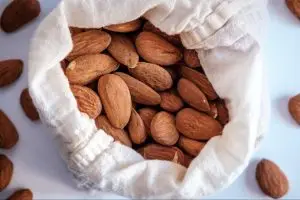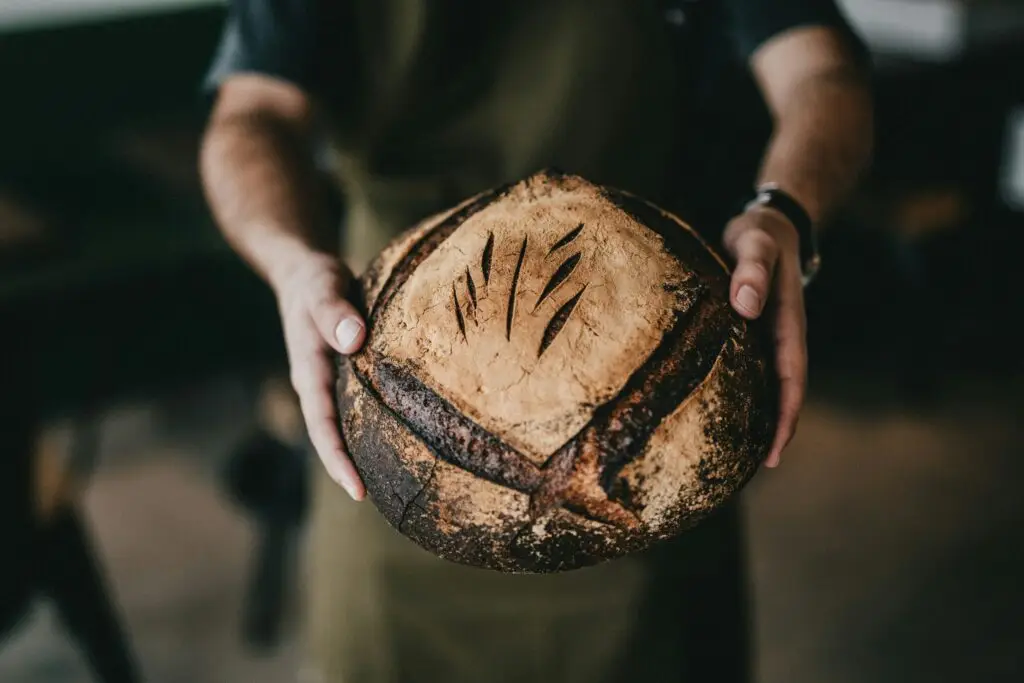

We’re heading into the holiday season—one of the hardest times for many people to stick to eating real, whole, unprocessed foods. When every event you attend is filled with offers of Halloween candy, Thanksgiving pie, or Christmas cookies, it can be challenging to keep saying no. It gets even harder when your body is saying you need that piece of cake, even though you know eating it will make you feel sluggish, bloated, and just yucky overall. But why do our bodies crave food that is ultimately not great for us?!
There are a lot of reasons—some psychological, some physical, and some hormonal. But the best way to combat cravings is to understand WHY your body craves specific foods—which can help you know how to address the craving and feel great.
If you can’t stop thinking about thick milkshakes, buttery mashed potatoes, or macaroni and cheese, you may have elevated cortisol levels.
Persistent stress can cause persistently high levels of cortisol (known as (the stress hormone) because your body gets stuck in “famine” mode—even though your stress is likely coming from modern conflicts related to work, family, money, poor food choices, etc., your body still reacts as it would have thousands of years ago—it thinks you’re starving. Your appetite for high-fat foods goes way up because your body is trying to protect you from food scarcity.
The problem is that many of the high-fat foods we crave are laden with chemicals, made with heavily processed flour, or fried in rancid oils—all things which can exacerbate hormone imbalance.
So addressing this craving is two-fold.
First, make sure you’re eating plenty of healthy fats from wild-caught fish, avocado, olives, coconut products, nuts and seeds along with blood-sugar stabilizing complex starches like root vegetables and squash.
Here’s an easy recipe to get you started:

(serves 3)
1 pound butternut squash, grated
2 tablespoons organic butter, ghee, or coconut oil
1/2 teaspoon sea salt
1/4 teaspoon freshly ground pepper
3 pasture-raised eggs
In a frying pan, melt butter, ghee, or coconut oil over medium heat. Add the shredded squash and salt and saute until cooked through and starting to brown, about 10 minutes. Form the squash into three nests, using your spatula to round out a hole for the egg in the middle. Crack one egg into each nest, sprinkle with sea salt and freshly ground pepper, and cover the frying pan with a lid. Allow to cook until the white is set but the yolk is still runny, approximately 5 minutes. Using a spatula, slide onto a plate and enjoy.
Second, it’s time to reduce your stress levels. Easier said than done, right? The best way to start is by listening to your body and taking time for self-care (i.e. pamper yourself as often as you can). Long hot baths, gratitude journaling, walks in nature, a massage, and time spent with supportive family and friends or your partner are all good ways to de-stress. Even if you only have ten minutes a day, practice slow, measured breathing and meditation. This is one of the best things you can do to reduce cravings for processed, high-fat foods.
If your craving is tending more toward sugary foods like chocolate, cookies, baked goods, candy, or soda, you may have high cortisol and low serotonin.
Throughout your menstrual cycle, your levels of estrogen fluctuate. Estrogen impacts all areas of your body, not just your reproductive hormones, and one of the roles of estrogen is to increase serotonin and the number of serotonin receptors in the brain. Estrogen also impacts your body’s production of cortisol. In fact, high estrogen is one of the most common causes of elevated cortisol levels in women. If your serotonin is low but your cortisol is high, you’ll crave fat to address your consistently elevated cortisol, but you’ll also want simple sugars for a serotonin fix—simple sugars are metabolized very quickly and impact your serotonin levels right away. The problem here is that you’ll crash just as quickly — leaving your hormones even more out of whack than they already were, and making the problem worse in the long run.
In addition, women with PCOS will have elevated insulin levels, which negatively increases testosterone levels. If you have been diagnosed with PCOS, you definitely crave sugar and simple carbs to address your imbalanced blood sugar levels, which end up further increasing elevated androgens (essentially, making hormone imbalances even worse).
When it comes to sweets, I’ve found it’s important to learn to distinguish physical food cravings from emotional ones. If you absolutely have to have some form of special dessert then have it! Don’t send yourself packing on a guilt trip. Enjoy it. Savor it. Offer gratitude and then let it go. Get right back on the wagon and keep moving forward. Small variations are fine and do not constitute failure, so don’t give up!
Being prepared is also key. If you’re a sweets person, stock your fridge and pantry with organic fresh and frozen berries, organic dark chocolate bars (at least 85% cacao), grain-free granola and gluten/grain-free baked goods sweetened with fruit and a small amount of maple syrup, coconut sugar, or raw honey.
Another trick—adding cinnamon makes things that aren’t sweet taste like a treat. So toss cinnamon into smoothies, grain-free breakfast cereals, or even on sliced green apples, and it will feel more like a dessert.
Here’s an easy, decadent and nourishing recipe that’s easy to mix up and have on hand when cravings strike:
1 pint organic BPA-free canned coconut milk (Native Forest Simple or Aroy D coconut milk)
1/4 cups chia seeds
1 tablespoon pure maple syrup
10 cardamon seeds OR 6 Tbsp raw cacao powder (optional)
Place all ingredients in a glass mason jar. Shake very well. Place in the refrigerator until the texture resembles tapioca pudding (about an hour). Enjoy!
Dreaming of pretzels, potato chips, or french fries? You’re craving sodium, and you could be responding to overstressed adrenals, but you also may be dehydrated.
Salt has gotten a bad rap over the years, so many people don’t realize that you actually need it to survive. Your body uses sodium levels to regulate all of your fluids—the right balance is needed in order to maintain the health of your heart, liver, and kidneys. So if your body’s fluid levels fall below what’s healthy (dehydration), you may start craving salt so that your body has what it needs to restore the correct sodium/fluid levels.
In addition, research suggests that higher levels of sodium in the body inhibit cortisol production. So when you’re stressed and your cortisol is too high, craving salt could be one way your body tries to reduce cortisol (or make you feel less stressed). AND sodium is a primary fuel source for the adrenals, meaning a steady supply of sodium is necessary for our adrenal glands to function properly.
If your adrenals are taxed (due to chronic and/or acute stressors), you often crave salt—and one of the best things you can do is to EAT MORE SALT! As long as you’re only choosing the highest quality, mineral-rich salt (i.e. Pink Himalayan Salt, Celtic Sea Salt) there is no reason to limit your salt intake in any way. Our ancestors would walk to the ends of the Earth and back to find salt as they understood how crucial of a nutrient it is for the body.
When sodium and potassium levels are low, the hormone aldosterone (produced by the adrenal glands) will also be low. As your adrenal glands become unable to produce enough aldosterone, something strange takes place. Aldosterone is responsible for telling the kidneys to retain the salt that your body needs, so if your adrenal glands don’t produce enough aldosterone, your kidneys eliminate the salt through the urine, leading you to crave even more salt.
Additionally, low aldosterone levels lead to electrolyte imbalance and cell dehydration. This causes low blood pressure, lethargy and muscle weakness—all signs of adrenal fatigue.
The first and most important way to combat salt cravings due to fatigued adrenals is to use more salt. Seriously! I recommend adding 1/4- 1/2 tsp of mineral-rich, high-quality salt to 16 oz of warm water first thing in the morning to support adrenal health and energy levels. Also, be sure to liberally salt your food—as long as you’re not using white table salt or other refined sources of salt, there’s no need to limit in any way.
I also love to recommend using electrolytes daily in your water. My favorite brand is LMNT – they make delicious, super clean, and high quality electrolytes. They’re the best on the market in my opinion.
Next, make sure you’re choosing healthy sources of sodium when cravings hit. Most packaged salty snacks are loaded with preservatives, artificial colors and flavors, are completely devoid of any kind of nutrients, and worst of all use toxic white table salt. Instead of that bag of corn chips, try sliced cucumbers, avocado slices or tomatoes sprinkled with Himalayan sea salt or Celtic sea salt, naturally fermented pickles, or bone broth with an extra dash of sea salt and coconut aminos. And, as always, make sure you’re drinking plenty of filtered water all day long, ideally with a packet of electrolytes added daily.
Here’s a fun recipe for a satisfying salty snack:
Preheat the oven to 450 F. Cut up ½ head of cauliflower into tiny bite-sized pieces and toss in grass-fed butter or ghee. Spread on a baking sheet with parchment paper. Bake for 30 minutes, flipping the cauliflower at least twice. The cauliflower will brown slightly. Take out of the oven and sprinkle with either onion powder + chives, garlic powder + nutritional yeast, or simply sea salt & fresh cracked pepper.
Another way to combat cravings is to make some tweaks to your lifestyle – lack of sleep and exercise definitely contribute to cravings.
Start by making sure you exercise daily. Take a long, slow walk outside in a beautiful setting. Try restorative yoga, a leisurely bike ride, or dance to your favorite music for an hour. Whatever it is, make sure that it’s something you can look forward to doing EVERY DAY for 60 minutes. Moving your body in a way that you enjoy can also reduce stress (see above!), and is an excellent remedy for fatigue and depression.
Sleep is always crucial for good health, and this is even more true when your cravings are out of control and your hormones are off-balance.
Here are some tips that can help ensure you get a full night of restful, restorative sleep:
If you can’t stop thinking about thick milkshakes, buttery mashed potatoes, or macaroni and cheese, you may have elevated cortisol levels. Eat plenty of healthy fats along with blood-sugar stabilizing complex starches. And then reduce your stress levels. Listen to your body and take time for self-care. Even if you only have ten minutes a day, practice slow, measured breathing and meditation–it’s one of the best things you can do to reduce cravings for processed, high-fat foods.
If your craving is tending more toward sugary foods like chocolate, cookies, baked goods, candy, or soda, you may have high cortisol and low serotonin. When it comes to sweets, I’ve found it’s important to learn to distinguish physical food cravings from emotional ones. If you absolutely have to have some form of special dessert then have it! Don’t send yourself packing on a guilt trip. Enjoy it. Savor it. Offer gratitude and then let it go. Get right back on the wagon and keep moving forward.
Dreaming of pretzels, potato chips, or french fries? You’re craving sodium, and you could be responding to overstressed adrenals, but you also may be dehydrated. The first and most important way to combat salt cravings due to fatigued adrenals is to use more salt. I recommend adding ¼ – ½ tsp of mineral-rich, high-quality salt to 16 oz of warm water first thing in the morning to support adrenal health, support energy levels, and increase hydration. Also, be sure to liberally salt your food—as long as you’re not using white table salt or other refined sources of salt, there’s no need to limit it in any way.
The Fertility Code is the best-kept secret of women who want to take the guesswork out of conceiving, and give themselves every possible chance of getting, and staying, pregnant successfully.
Bringing together a personalized & custom approach, evidence-based information, science-backed protocols, and nurturing practices, this course is for anyone who is struggling to get pregnant, or thinking about getting pregnant soon. The course is a one-stop-shop for getting your body, mind and soul prepared for conception.
In less than 3 months, you will learn exactly what you need to do now to get pregnant successfully and have a healthy full term pregnancy with The Fertility Code.
Sarah Jane Sandy is a certified nutrition therapist, and a fertility and women’s health expert. She has helped hundreds of women increase their fertility naturally and go on to have healthy full-term pregnancies. She has been working with women and couples trying to get pregnant for over 16 years and over 90% of the women who work with her get pregnant and have healthy babies.
She also works with women trying to fix their hormone imbalances, as well as supporting women through pregnancy and the postpartum period. Learn more about her own fertility and hormone journey here. To send Sarah a message, complete her Contact Form.




Curious about your fertility health? Take this simple quiz to find out what factors may be harming your fertility, and learn what you can do about it!